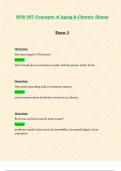Samenvatting
HPI4007 Summary of all cases, trainings, and workshops (Financial Management of Healthcare Organizations)
- Instelling
- Maastricht University (UM)
Summary of the course HPI4007 (Financial Management of Healthcare Organizations) of all four cases, and of the two trainings about cost analysis and of the workshop about financial statement analysis.
[Meer zien]













